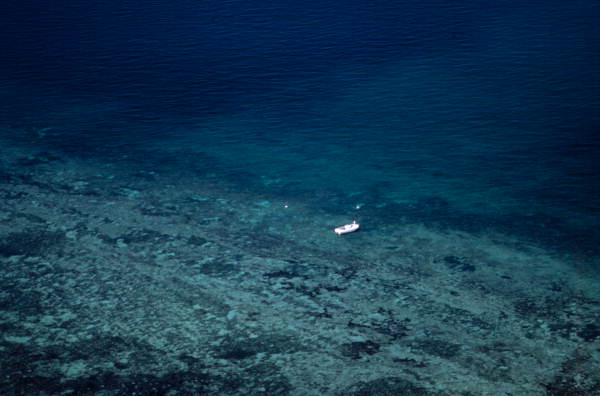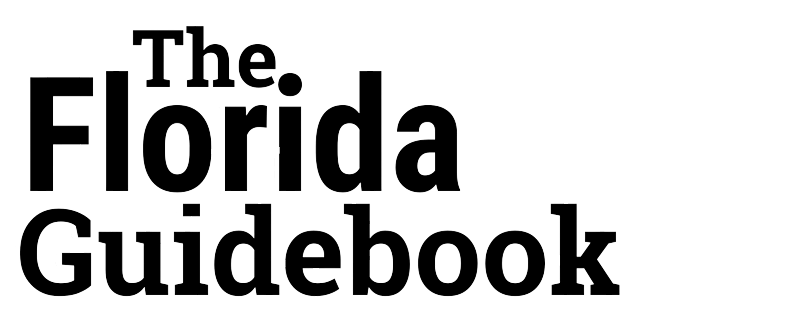Content Keys
The Content Keys are a group of small islands in the lower Florida Keys backcountry, near the Gulf of Mexico.
The entire region is famous for its beautiful clear water, abundant wildlife and fine, sugar-white sand. It is renowned for having some of the best sandbars in Florida.
Note: The Content Keys are located in an extremely sensitive, fragile natural environment.
The area is protected by the Great White Heron National Wildlife Refuge and the Florida Keys National Marine Sanctuary.
Boaters must ensure that they:
- Understand how boats can damage the environment
- Know how to avoid environmental damage
- Know and follow all rules and guidelines
Read more Florida Keys boating tips from NOAA.
Location
The Content Keys are located in the lower Florida Keys, at the edge of the Gulf of Mexico and south of Florida Bay.
The keys lay in the outskirts of the Florida Keys “Backcountry”, a vast region of shallow water, islands and sandbars.
Depending on where you measure from, the Content Keys are located approximately:
These distances are measured “as the crow flies”. The actual distance may be considerably shorter or longer depending on the actual route taken.
There are numerous obstructions, shoals and impassable areas in the region which require advanced navigation, and may require long routes.
Overview
The Content Keys are extremely beautiful. The islands lay in a remote area, surrounded by a maze of shallow water, shoals and sandbars.
The water in the Content Keys is often crystal clear, depending on the wind and tide conditions. The water is so clear that it can be almost invisible when viewed from above.
The sandy bottom is fine and is often an extremely bright white, creating a beautiful contrast of pastel colors.
There are numerous low-lying islands in the area around the Content Keys, and there are countless sandbars. The sandbars and shoals move constantly due to wind and tide, especially after storms.
Many sandbars around the Content Keys are partially submerged, and may only be visible at low tide.
The Content Keys are usually described as being divided into two distinct parts, West Content Key and East Content Key. They are separated by the Content Passage Channel.
Other islands in the area include Little Crane Key and Racoon Key, also known as “Coon Key”.
Accessing the Content Keys
There are various ways to reach the Content Keys, depending on where you depart or launch from.
Many captains prefer to access the Content Passage from the deep waters of the Gulf of Mexico, instead of navigating through the shallow backcountry.
Many boaters access the Content Keys from marinas and boat ramps in the “Middle Keys” and the northern “Lower Keys”.
Other major keys in the general vicinity include Big torch Key, Summerland Key and Cudjoe Key, which all lay to the south of the Content Keys.
Some boaters visit the Content Keys from Key West, although it’s a long ride. Most people choose to visit sandbars near Key West, instead.
The Content Keys are a very popular destination for local boaters in the Florida Keys.
Because they are relatively difficult to reach without owning a boat, chartering a boat, or paying for a sandbar tour, the Content Keys are considered to be a “Local’s spot”, and are well off the beaten track for most tourists.
Navigating to the Content Keys
The Content Keys are not a suitable destination for inexperienced boaters.
Navigating in the Content Keys backcountry is difficult due to the maze of channels, constantly changing shoals and shallow water.
Many channels in the region are unmarked, and change frequently due to tidal erosion and shoaling. Changes are particularly extreme after storms.
Tidal creeks are dispersed throughout this area. These channels are often deeper than the surrounding sandbars and flats, but even the creeks and channels are very shallow. Many channels end abruptly, or contain unmarked obstructions.
Boaters who visit the Content Keys should be sure they are prepared for expert-level navigation, and that they know how to avoid damaging the fragile ecosystem.
Boaters should be especially careful not to run aground, or damage the sensitive seagrass beds or seafloor.
Many boaters find that even if they are able to successfully navigate to the general area, they find it difficult to reach a specific spot due to shallow areas and shoals.
Wildlife Refuge Rules
The Content Keys are located inside the jurisdiction of both the Great White Heron National Wildlife Refuge, and the Florida Keys National Marine Sanctuary.
The Content Keys are surrounded by a sensitive ecosystem, including fragile seagrass beds, sandbars and vast expanses of extremely shallow water.
The seagrass beds are particularly important, as they are the foundation for clean, healthy water and marine life throughout the entire Florida Keys.
Seagrass is extremely vulnerable to damage by boat propellers, wakes and other abuse.
Once a “Prop scar” is created, the damage spreads to surrounding areas and can kill an entire seagrass bed.
Seagrass damage causes a chain reaction of environmental damage. It is extremely destructive, and is very dangerous for the health of the Florida Keys marine ecosystem.
The Content Keys and other islands in the backcountry are also important nesting areas for threatened birds and marine life. Many sea turtle species nest in the area, including hawksbill, green and loggerhead turtles.
There are regulations in the wildlife refuge to protect the area from destruction.
Some islands are protected, and access is restricted. Some islands have a 300 foot no-access exclusion zone, which boaters must stay outside of.
Some areas in the Content Keys are subject to strict idle speed/no wake zones, so boaters should remain alert at all times.
Warnings about the Content Keys
If you are not 100% confident in your ability to avoid environmental destruction, please do not attempt to navigate to the Content Keys without an experienced guide, or at least seeking reliable local knowledge.
It is very easy to run aground and cause expensive, destructive damage to the environment, which contributes to the decline of the entire Florida Keys ecosystem.
Considerable thought should be given to the boat choice when visiting the Content Keys. Boats with extreme shallow draft may be required, depending on your route.
Captains and boat operators must know how to operate in the shallow Florida Keys backcountry without damaging the fragile marine ecosystem, or their vessel.
Environmental damage, including destruction of seagrass, is illegal. Environmental damage can result in expensive fines to pay for environmental repair and remediation.
The Content Keys sit in a very remote location.
Boaters should ensure they are well supplied and well prepared for the trip, with reliable watercraft and gear. Other boats may not be seen for long periods of time, or at all when traffic is light.
Things to do in the Content Keys
The Content Keys are remote, deserted islands. There is not any development or infrastructure.
The main attraction in the Content Keys is to anchor and enjoy the beautiful water and quiet, peaceful surroundings.

There are many beautiful anchorages in the surrounding region, especially between Key West and Harbor Key Bank, which is a reef in the Gulf of Mexico on the outskirts of the Florida Keys.
Many people bring their dogs to run and play in the shallow water in sandbars. Dogs are prohibited on the islands themselves.
Snorkeling
The Content Keys are popular for snorkeling in the calm, clear water.
There is not any coral in this stretch of Florida Keys, but there is often interesting marine life in the water, including fish, dolphins, sea turtles, rays, sharks, and a variety of other marine life.
Sharks are commonly seen in this area, and throughout the Florida Keys. This is a good thing, and should not instill fear. Sharks in Florida generally do not pose any threat to humans.
Sharks are an important capstone species. Their presence is a good sign because they are essential to a healthy, balanced marine ecosystem.
Lobstering
The Content Keys are one of the most popular lobstering spots in the Florida Keys. Fishing charters often visit the area on backcountry trips.
The Content Keys can become extremely busy during Florida’s lobster season, especially the “Mini season” in late July. Many locals do not even try to visit the area during the busiest times, due to the extreme overcrowding.
Visitors should be sure they know and follow regulations for fishing and lobstering in Florida.
Bird Watching
The Content Keys are a popular destination for bird watchers, due to the high number of bird species in the area.
Many bird species live in the area, including sea birds and migratory birds who use the Content Keys as a seasonal roosting ground.
The islands are crucial for the bird populations’ health because they are protected nesting grounds. They are particularly important because they do not contain racoons or other predators which usually threaten bird nests.
Floating and Paddling
Many visitors like to bring floats, especially floating lilly pads, or water mats, to play in the clear water. It is also common for boaters to bring SUP paddleboards, kayaks and other water toys to explore around the Keys area.
Kayaking to the Content Keys
It is possible for experienced paddlers to kayak to the Content Keys, but it is a serious trip. The trip is very long, and covers large expanses of open water, possibly including some exposed ocean.
The Content Keys are located in a remote area without easy access to help or rescue.
This trip would only be appropriate for expert kayakers who are prepared with appropriate experience, local knowledge and equipment.
More information can be found on the Florida Paddling Trails Association website.
Featured Image
Copyright Maxar via Bing Maps. Microsoft product screenshot reprinted with permission from Microsoft Corporation
